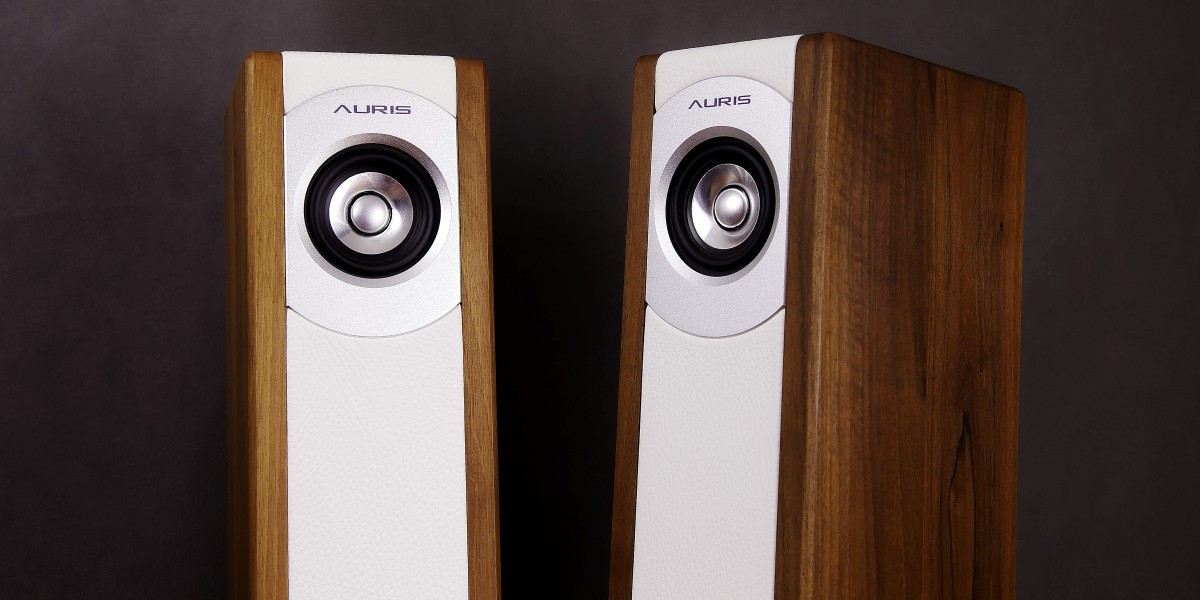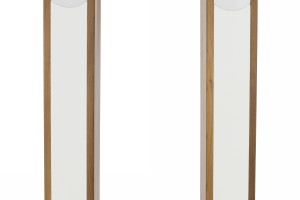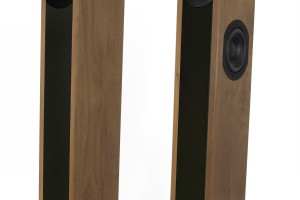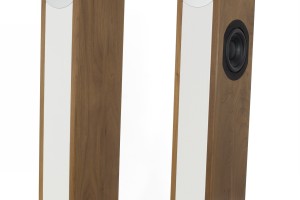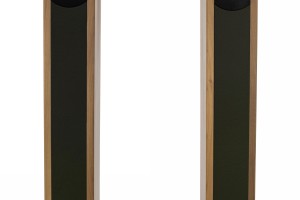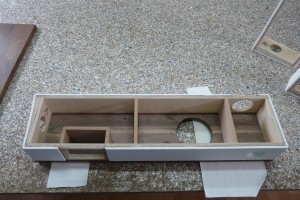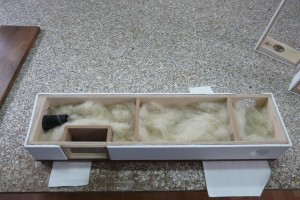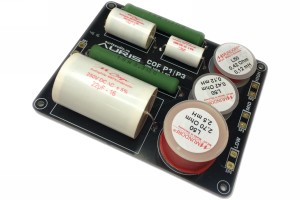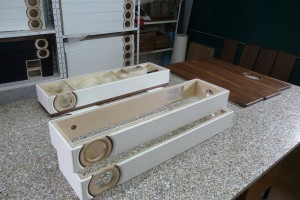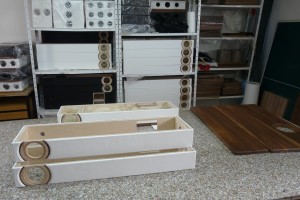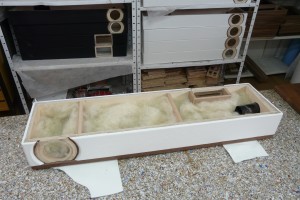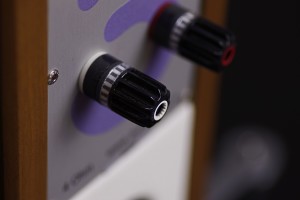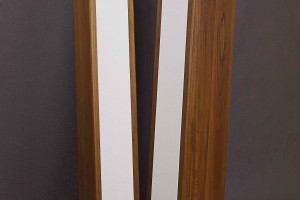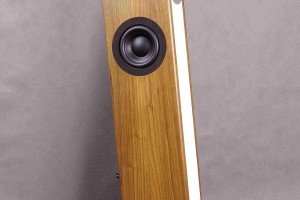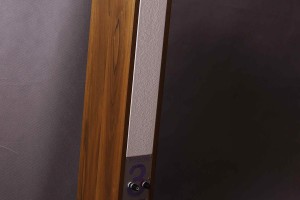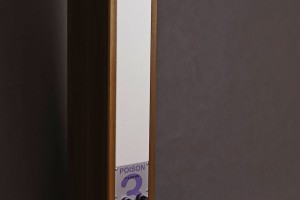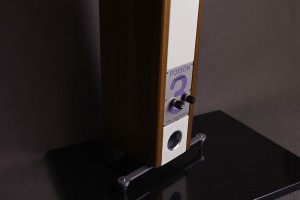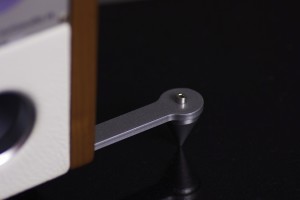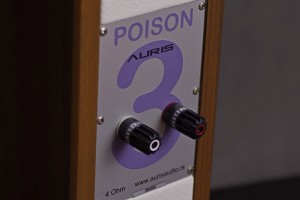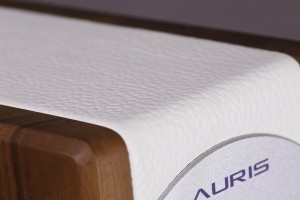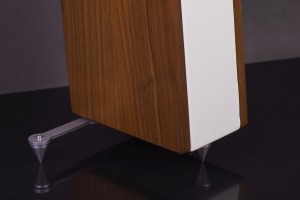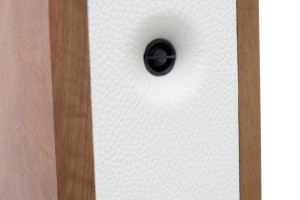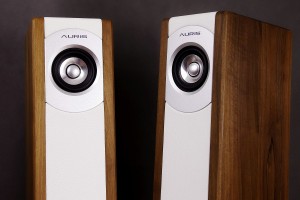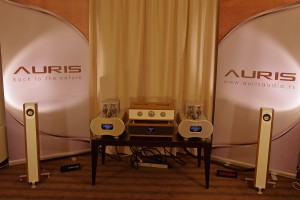If I remember correctly, the first time I encountered products made by Serbian company Auris Audio was in Munich, most likely in 2014. High End in Munich is a huge show so even though I spend 3 days there every year it is easy to omit some interesting presentation since there is simply not enough time for all of them. To be perfectly honest I noticed Auris mostly because they paired their electronics with Boenicke loudspeakers, that I’d already known and liked. When I came to the room the aesthetics of Auris components caught my eye immediately and moments later also the performance contributed to the very positive first impression. It was enough to remember the name for shows to come. A year later Serbian manufacturer presented their own, complete system. The new loudspeakers were clearly inspired by Boenicke products, but they had their own character. Yet again it was a memorable presentation. Finally, last year Auris held an interesting and successful presentation also during Audio Video Show in Warsaw introducing their new speakers, Poison 3 and Poison 1 along with amplifiers, DAC and so on. After enjoying the sound a lot I decided it was time to finally ask them for some of their products for a review. I got in touch with Ms Jelena Vasiljevic and a few weeks later a review sample of Poison 3 loudspeakers was delivered by a courier.
Introduction
The very first audiophile loudspeakers I ever had, were small monitors, Acoustic Energy AE 1 mkII Reference to be exact. They were absolutely fantastic! Some reviewers described them as lacking any bass. I wasn’t even a reviewer back then but I was so happy proving to anyone who visited me that this claim was simply not true. Properly set up these tiny boxes delivered very nice, tight, tuneful bass, although obviously not going as deep down as large floorstanding 3-way boxes. Later came my phase of SET fascination which turned my attention to high-efficiency speakers. Ever since each and every loudspeaker model I had was, well, rather big including my current 3-way Ubiq Audio Model One Duelund Edition. Many people visiting my room loved the sound of each of those speakers although most of them were not ready to put such “big monsters” in their own living rooms. And I don’t blame them, of course. Not everybody is so lucky as I am to have a wonderful, very understanding family. Most music fans do not have dedicated rooms so what they need is speakers that deliver good performance while being of moderate size, unobtrusive and elegant.
I guess what I just described is a target group for Auris Audio’s Poison 3 loudspeakers. During the Warsaw Audio Video Show these were paired with powerful Forte 150 tube monoblocks and they sounded quite impressive especially considering their size. The hotel room size was probably around 20 sqm, which created realistic environment similar to what many potential owners have at their disposal. Despite Poison 3’s diminutive size they did a good job of filling the whole room with sound while keeping it clear, well pronounced, lively which is not always the case with small boxes trying to sound big. Another important feature was their appearance. Natural walnut on side walls, genuine leather on front and rear baffle, elegant metal plate surrounding front fullrange driver, and another one hosting high quality WBT connectors on the rear – to put it plainly, these small speakers offered luxury, if a bit unorthodox look. So many people, me included, sat there on one hand admiring good looks of these speakers and on the other enjoying high quality sound. Already then I wondered how would these beauties sound like in my room. Now I have a chance to find that out.
Design
The unorthodox appearance comes from the narrow front baffle with a single fullrange driver (sourced from Fountek) placed close to the top of the speaker, bass woofer (from Peerless) placed on the side but also in the upper half of the baffle, and a tiny tweeter (from Tang Band) placed on the rear. The woofer works up to 300Hz where Fountek takes over up to 17kHz and the tweeter on the rear works from 7kHz to 22kHz. The crossover, as you can see on one of the photos, features high quality components sourced from Mundorf. The rectangular cabinet is placed on three solid, adjustable spikes – one in the front is screwed directly into cabinet’s base and two in the back are mounted actually on extension bars protruding to both sides. This solution adds this (relatively compared to other dimensions) tall and not so heavy construction a necessary stability. The whole cabinet is slightly tilted backwards which, I guess, is a necessity considering how small Poison 3 are. On the back there is a single bass-reflex port placed very low, just above the floor level below a nice, metal plate with high quality WBT connectors. On the pictures of cabinet’s inside I received from the manufacturer you might notice bass-reflex port placed on the bottom of the speaker. As Ms Jelena explained to me, I received for a test an initial version of these speakers that bit later was slightly changed and now bass-reflex port fires down. Auris engineers ensured me that it didn’t really change the sound characteristics of Poison 3.
It seems that the manufacturer prefers (which is good!) to use natural materials, hence walnut wood side panels, plywood front and back baffles finished with genuine white or black leather. Also inside a natural wool is used as damping material. Specification reads a 3-way, (nominally) 4Ω design of rather low sensitivity of 86 dB and surprisingly wide frequency range (28Hz – 22 kHz). On one hand I wouldn’t get too attached to this frequency range considering the size of Poison 3, on the other though, as the listening sessions proved, bass extension is surprisingly good. This model is offered by a company renown for their tube amplifiers, but it clearly requires a decent output power to be properly driven. Low-power SET amps are rather out of the question. I tried Poison 3 with my Modwright LS100+KWA100SE set, Musical Fidelity NuVista600 integrated, but ultimately I settled for Rogue Audio Cronos Magnum II integrated tube amplifier. With a decent output (2 x 100W) and great price/performance ratio it seemed to be “the most likely scenario in real life” for Poison 3 among amplifiers available to me when performing this test. I guess Auris Audio being a manufacturer of tube amplifiers, that are most likely also used in a process of assessing new speaker models, is also a factor contributing to a really good match between these components.
Sound
Having some experience with loudspeakers featuring side-firing bass woofers in my room I decided to place Poison 3 with woofers firing out. Of course if one needs to place them close to side walls or some other obstacles woofers firing in might turn out to be a better solution. If you’re going to try them at home you should check both options and choose the one that suits you and your room best. But in my room, where there is enough open space on both sides, bass woofers firing out always sound better. I placed the speakers around 1 meter from the wall behind them and toed them slightly in and after a few minor adjustments was ready to listen to them.
So let’s take the bull by the horns right away, shall we? Most people who see these loudspeakers assume that the bass performance would be less than satisfactory. I learned the hard way not to assume too much when it comes to audio products. I was surprised too many times to keep assuming things based on product’s appearance (and the surprise can always go both ways as I’ve been disappointed more than once too). The question here was not really about bass extension, as despite the bold claim of Poison 3 going down as deep as to 28 Hz I did not really expect it to compete in this regard with my, several times bigger, Model One that according to manufacturer goes “only” as deep as to 40 Hz (and up to 30 kHz +/- 3 dB). The actual question was, whether the designer pushed this bass-reflex design to the limits and achieved maximum extension but poor quality, boomy bass, or rather focused on high quality low-end within cabinet’s and woofer’s size limits.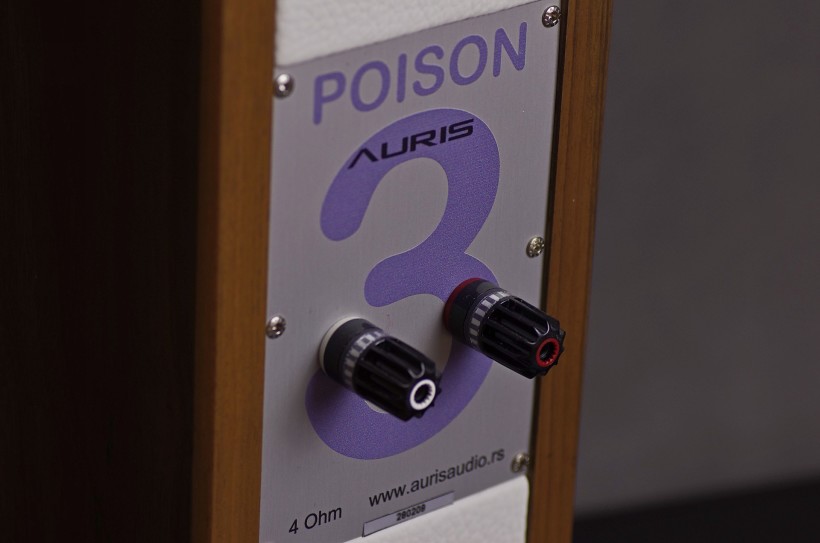
After an extended (as I got seek in the meantime) break-in period I started my assessment with some favorite recordings with double bass and bass guitar to find out which one Poison 3 was – a good performer or a show-off. I am really glad to report it is the former. Bass was fast, tight and tuneful. I guess it will depend on amplifier driving them, acoustic conditions, room size and placement but in my 24 sqm, more than 3m high room with each amplifier (although all delivering 100+ W output) the results were similar every time. The bass did not go very deep focusing in mid and upper area so without a very powerful impact larger speakers are capable of delivering, but for me that’s OK – I take quality over quantity every time. With double bass on some Ray Brown’s and Christian McBride’s albums I heard a bitter smaller, more string-focused version of this fantastic, large, heavy instrument. A huge body is what gives double bass a really powerful, incredibly deep sound. With Auris speakers focus was slightly shifted to strings, yet there was wood behind them, just not as much as with bigger boxes. The attack phase was properly fast, a decay might have been slightly shortened but within an acceptable margin. Due to good differentiation, high dynamics and very good control of the bass listening to masters of double bass was highly enjoyable.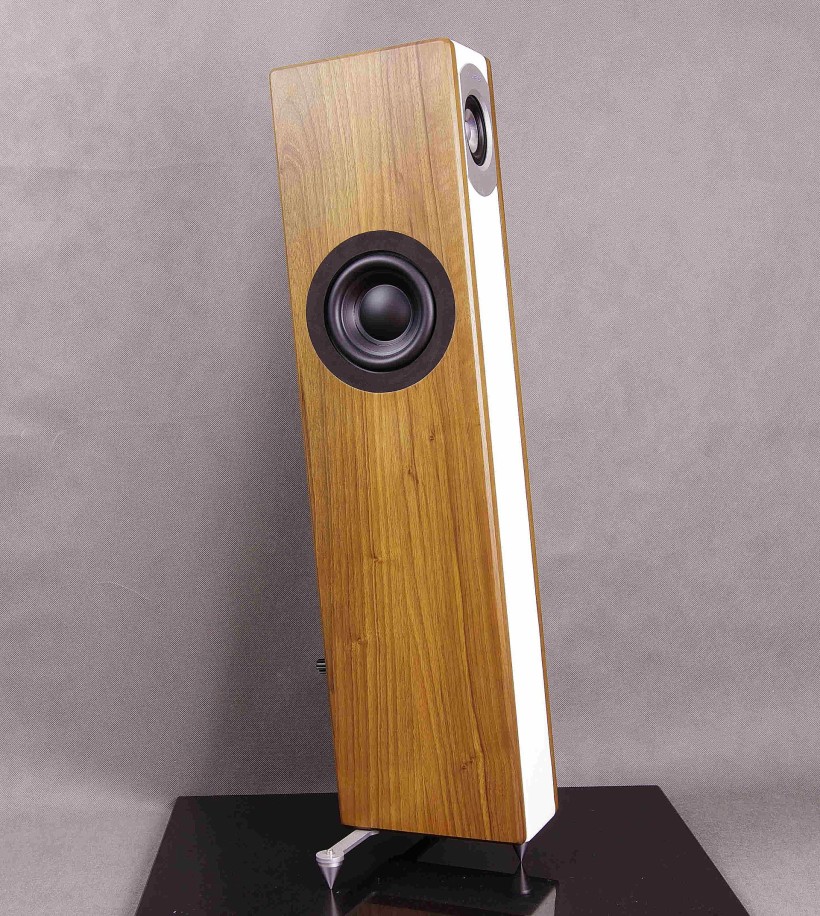
Bit as expected the imaging is really good with Poison 3 although most instruments have a slightly smaller bodies then usually. These are little speakers after all and a smaller scale of presentation is to be anticipated. With bass guitar I truly enjoyed the fast, well-differentiated, powerful performance. Sure it didn’t have as much physical impact as such guitar does during a concert, but it was agile, avid, the sound carried a lot of energy that made this presentation impressive and again, highly enjoyable. I had a lot of fun listening to Marcus Miller for example, or to Dire Straits albums where bass guitar set the pulse of almost every track that with Poison 3 was particularly accurate. As a blues fan, knowing already that timing was good (which is a key feature for proper pace&rhythm) I had to play some Muddy Waters, Stevie Ray Vaughan, John Lee Hooker and so on. I have to tell you – these little Serbian beauties surely can feel the blues! In part, as anticipated, it was due to this good timing that translated to a contagious pace&rhythm that made my feet and palms tap the rhythm all the time. But there was more to this presentation than just good p&r. The rich, tuneful, clean and precise midrange was another factor here as it was responsible for expressive, tangible presentation of voices. Those who love the blues now how deeply emotional it can be when played live but also when listening to the recordings assuming the system is able to convey that. Guess what – the Poison 3 did a great job with that but that’s still not all. All the gentlemen mentioned above were great guitarists too and that’s another advantage of the reviewed boxes. These electric guitars sounded powerful, when needed, rich, fast, “meaty”. Whether they cried their souls out or played fast, powerful riffs it sounded lively, inviting and just… right. So again – the Poison 3 definitely can play the blues!
So to sum up this part – as mentioned above – I always take quality over quantity and it seems Auris’ designers do too. Poison 3 prove that bass-reflex design doesn’t have to automatically mean a “boomy”, colored bass. Instead, it is fast, dynamic, tight, colorful and, considering the size of these speakers, also nicely extended. One can’t expect a thunderous power but a lightning speed one can. Unless your focus is on organ or electronic music with really, really deep bass you should be more than fine with them. Sure double bass or piano could use a bit more body, but it is something that I quickly forgot about while enjoying many other sonic qualities of this performance. Poison 3 obviously don’t mind playing loud so when needed one can crank up the volume to make up a bit for the size of these speakers. This was enough for me to enjoy even some bass-heavy soundtracks, like the one from “Prometheus” or “Oblivion” that require quite a momentum and power to sound properly. Now, having this issue (hopefully) cleared up we can move on to an overall performance.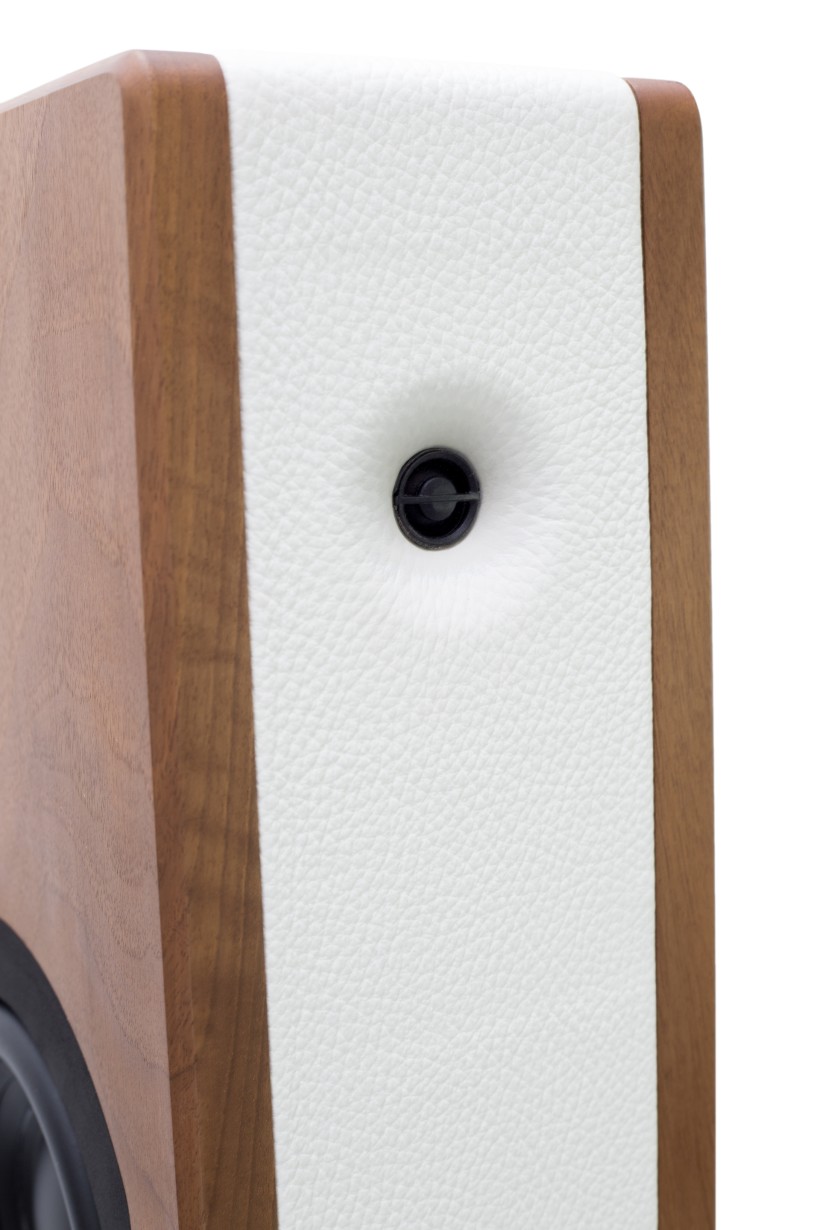
There was a time when I owned a single-driver speakers. Coherence of such designs is unmatched. Sure, there are downsides too, but no 2- or 3-way speaker is able to deliver as cohesive presentation as a full-range driver in a proper cabinet or open baffle. And yet, assuming well-designed crossover, it is possible to get really close. Again, Auris designer(s) did a very good job. The coherence of Poison 3 performance, in my book, made it to the top three features of this model. Which are these three? Namely the presentation is particularly: fast, spacial and coherent. By fast I mean always on time – no dragging, delaying, smearing – just great timing throughout the whole band (although the key is the bass as mentioned before). The relaxed, mellow tunes are still just that, but when it comes to blues, rock, sometimes classical music, where tempo and/or rhythm are key, Poison 3 really shine. Listening to them is not only enjoyable but also exciting, even invigorating. These are rather forgiving loudspeakers so when playing music like rock or pop, which usually is not of an audiophile quality, Poison 3 focus on dynamics, energy, rhythm, drive and so on, while not emphasizing weaknesses like compression or lesser resolution. This should work fine whether one likes to just sit and listen to the music or go a little crazy or throw a small party.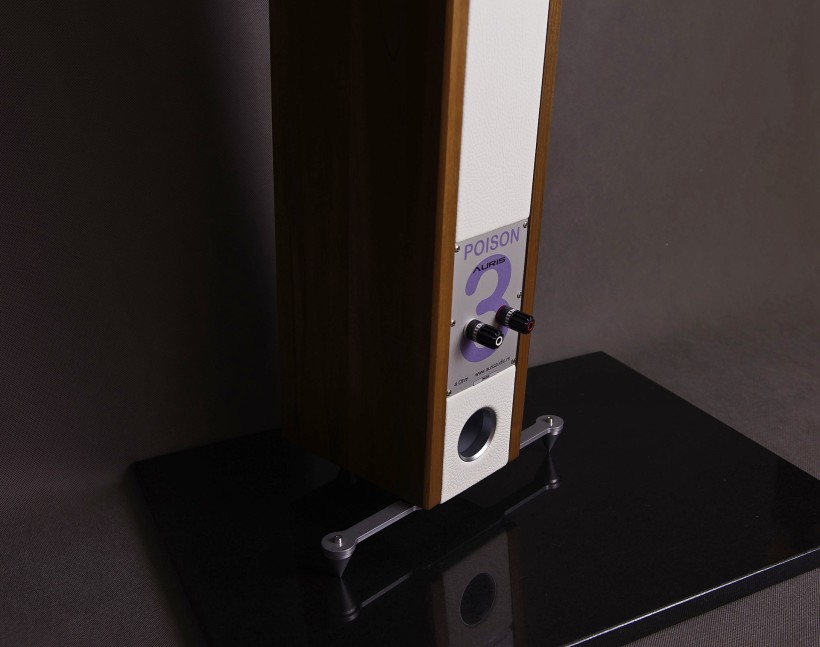
Soundstaging is another huge advantage of these speakers assuming one can offer them some free space around as I did. It might be a matter of choice – place them closer to the walls and you get more bass (not necessarily so clean anymore, but more powerful) but less spacial presentation. Or, if possible, give them a lot of open space around and you should achieve results similar to those described here. The tweeters placed on the rear add to that surely but I guess it is a combination of that and side-firing woofers. Poison 3 are capable of throwing a large, and I mean front-to-back and side-to-side, nicely layered, well-organized soundstage. The individual images might not be rendered that precisely, you won’t see exact contouring of each instrument and they might, as I already mentioned, be slightly smaller than I am used to, but it is still an impressive presentation. It reminded me in this respect rather monitors’ presentation style than one of floorstanders’. I guess the size of Poison 3 and placement of the drivers contribute to this, in my case, welcomed effect. Layering of the stage is also realistic, instruments seem palpable, proportions between them are accurate. Add to that really nicely conveyed acoustic environment, ambiance if you please, assuming it is present in the recording and you should find yourself immersed in the music event “happening” in front of you.
That’s the reason I loved listening to live concerts with Poison 3, especially those from small clubs with lots of room ambiance caught on the tape and with lively audience participation. These speakers were able to deliver such non-musical elements particularly well. Sure, these are not the most resolving or selective loudspeakers I know, and when it comes to a small, crowded stage you won’t be able to easily separate a chosen instrument from the others and follow it closely. It’s more of a “big picture” type of presentation not a particularly analytical one. Yet, there is a lot of information in the sound, details, subtleties that combined create an involving, realistic and musical presentation. Plus there is the so-called “fun factor” that with Auris speakers is really high. Type of music is not that important – I had as much fun listening to a concert of Muddy Waters with appearances of Mick Jagger and Rolling Stones guitarists, as with Patricia Barber’s on “Companion”, or Paco de Lucia, John McLaughlin and Al di Meola’s on “San Francisco Friday Night”. Completely different moods, genres, but what all these albums have in common are fantastic performances and amazing atmospheres of these concerts caught on tape. It still takes a good system to convey this properly but Poison 3 again did a really good job here.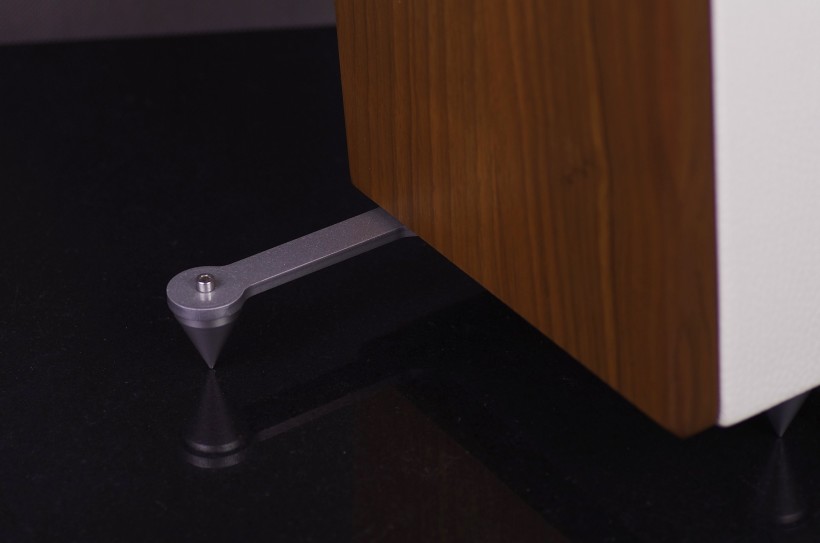
Now the coherence. It’s not every day that one sees loudspeakers with three drivers sitting on three different sides of the cabinet. I guess making their performance time and phase coherent was quite a challenge. By now, it should come as no surprise that I have to again congratulate the designers, as they did a really good job here too. No, coherence is not as good as from a single driver speaker but it is good enough to make it to the top three sonic features of Poison 3 (for me, I mean). The whole presentation is not only coherent but also smooth, liquid, it has a proper flow to it. It is easy to listen to the music using Auris speakers and the music genre doesn’t matter that much. Sure when it comes to symphonic music, operas, some more sophisticated jazz one might wish them to be bit more resolving and even more transparent, but I know many much bigger, more expensive speakers that also lacked enough resolution to fully satisfy my needs in this respect. Hence, I wouldn’t really hold that against Poison 3. Quite the opposite – I think the balance between the pros and cons of these speakers is definitely positive and it’s hard not to like these beautiful loudspeakers.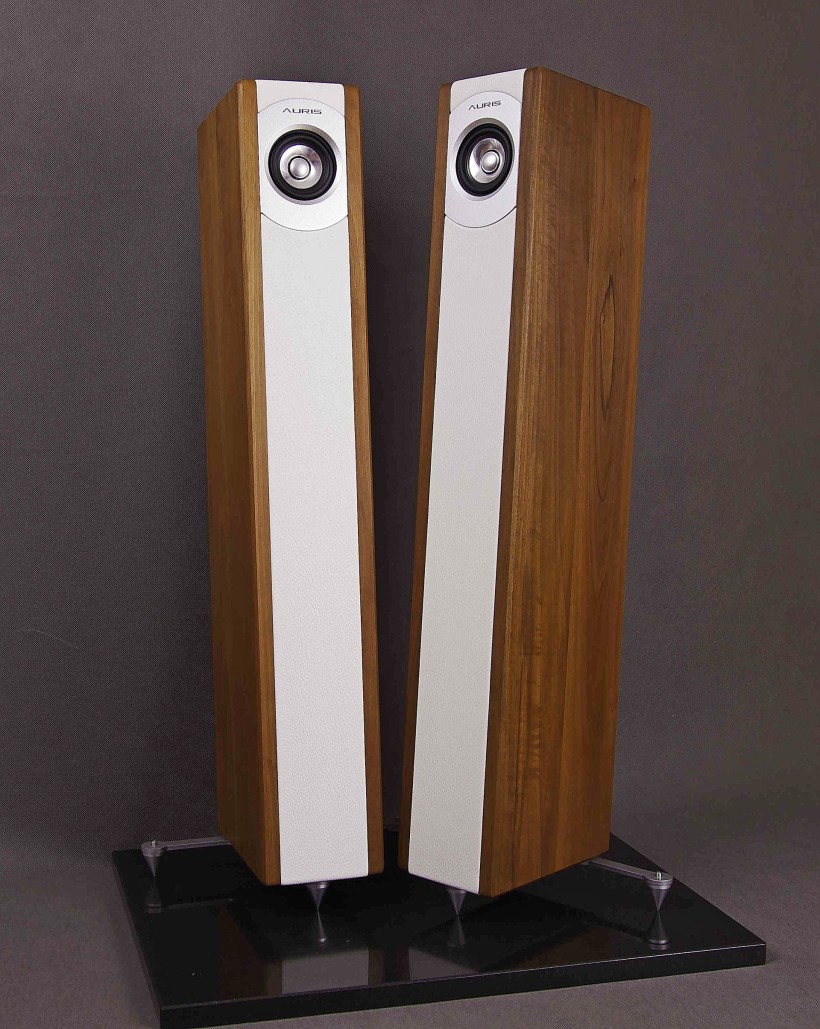
Summary
Despite encouraging presentations during few Shows I didn’t really know what to expect from Auris Poison 3 loudspeakers. The hands-on experience with a new (to me) brand is always an “unknown”. This time I can gladly report really good results of my assessment. If you saw these speakers during one of the Shows you already know that this is a great looking, elegant, luxurious even piece of furniture made of natural materials, that it doesn’t take much space and due to side-firing woofers you can choose one of two placement options to match your room and/or taste best. Sonic-wise I mentioned three most prominent features that I would characterize these boxes with. They deliver fast, taut, focused performance that is beautifully coherent. Add to that impressive soundstaging and good imaging, high musicality, smoothness and you should already know that listening to Auris Poison 3 is highly enjoyable. They can be forging so rock or pop music sounds really good on them, but they also appreciate, or allow listener to appreciate, classy recordings because they are able to deliver a lot of information in an orderly, fluid fashion. You definitely check them out if you’re on the market for this type of product – they are worth it!
Associated equipment:
- Analogue front end: J.Sikora Basic turntable, Schroeder CB tonearm, AirTight PC-3 cartridge, phonostages: Tenor Phono 1, Grandinote Celio mk IV
- Digital sources: a dedicated, passive PC with WIN10, Roon, Fidelizer Pro 7.3, JPlay Femto USB card with Bakoon battery power supply, JCat USB Isolator, Hdplex linear power supply
- D/A Converter: LampizatOr BIG7
- Power amplifiers: Musical Fidelity NuVista-600 integrated, Modwright KWA100SE power amp
- Preamplifier: Modwright LS100
- Loudspeakers: Ubiq Audio Model ONE Duelund Edition
- Interconnects: Hijiri Million (RCA), Less Loss Anchorwave (RCA), Yayuma (XLR), TelluriumQ Silver Diamond USB
- Speaker cables: Skogrand Beethoven, LessLoss Anchorwave
- Power cables: LessLoss DFPC Signature, Gigawatt LC-3
- Power: Gigawatt PF-2 MK2 and ISOL-8 Substation Integra; a dedicated power line with Gigawatt LC-Y in-wall cable; Gigawatt G-044 Schuko and Furutech FT-SWS-D (R)
- Racks: Base VI, Rogoz Audio 3RP3/BBS
- Antyvibration accessories: ROGOZ-AUDIO SMO40 and CPPB16 platforms and ROGOZ AUDIO BW40MKII feet, Franc Accessories Ceramic Disc Slim Feet and Wood Block Platform
Specifications (according to manufacturer):
- System: 3 way
- Finishing materials: Genuine leather and walnut wood
- Nominal impedance: 4 Ω
- Sensitivity (1 W / 1 m): 86 dB
- Maximum power: 150 W
- Frequency response: 28 Hz – 22 kHz
- Speaker terminals: WBT
- RMS power: 100 W
- Available leather colors: Black or White
- Dimensions (WxDxH) mm: 120 x 203 x 804
- Weight (pair/kg): 20
- Cables: Not included
Retail price:
- Auris Audio Poison 3: 3999€ + VAT (price is EX WORK FACTORY without VAT).


